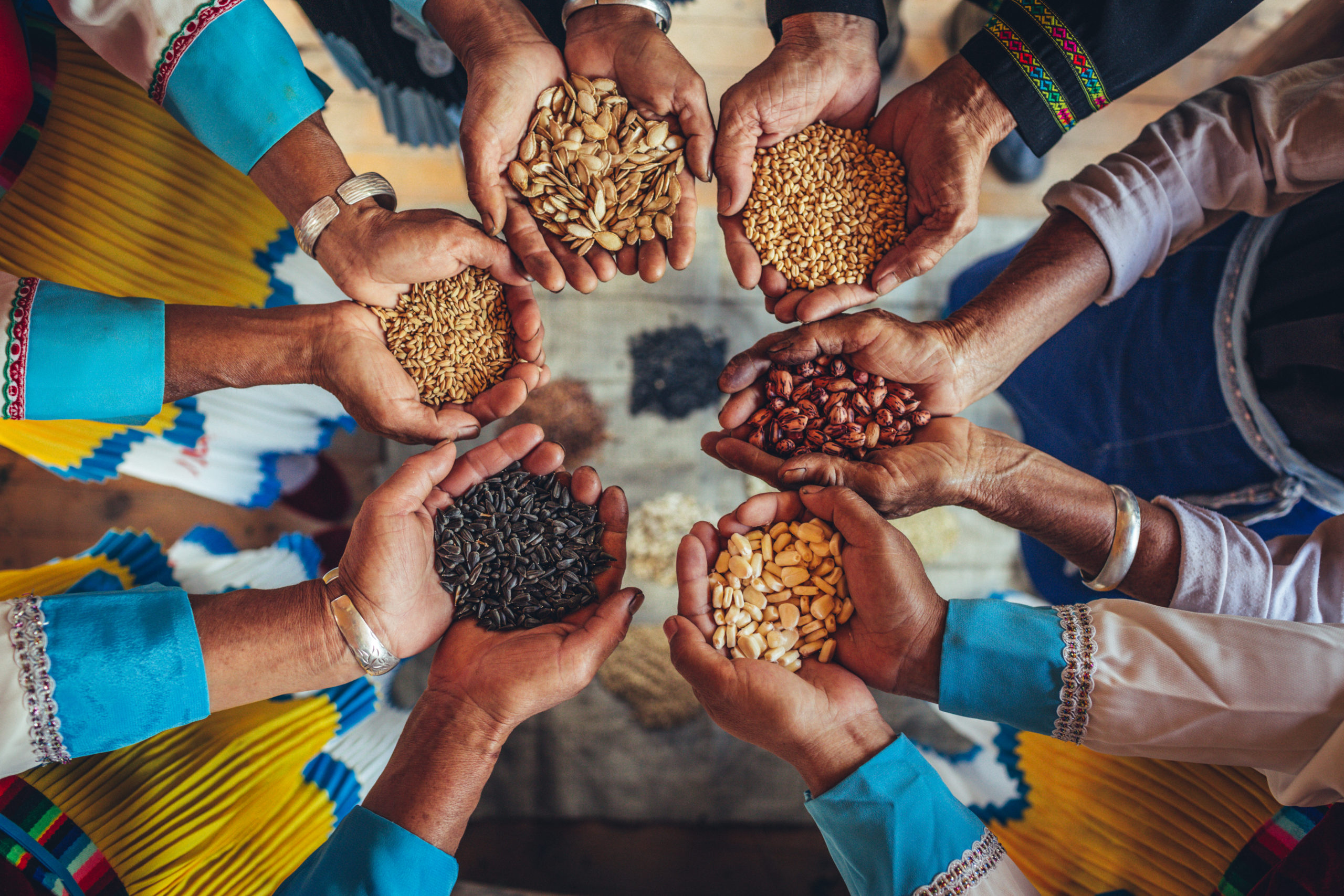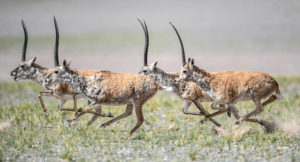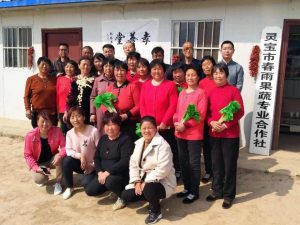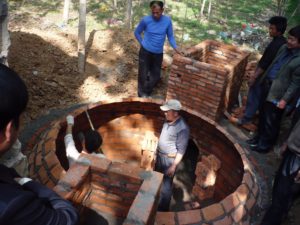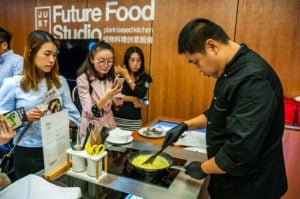China’s first “participatory seed breeding initiative”, involving small-scale farmers and plant breeders, got underway in Guangxi province in 2000. At the time, Shanggula was a typical village with maize as its staple food. But the hybrid seeds the local people planted, which had been developed by seed companies, struggled in the arid microclimate, and they didn’t find the yield tasty enough.
Zhang Shihuang took note. A researcher at the Institute of Crop Sciences, part of the Chinese Academy of Agricultural Sciences, and a leading scientist on maize, he brought plant breeders from public research institutions together, helping Shanggula to create a community seed bank to gather and conserve “landraces” – local crops improved and adapted over time by traditional methods. These seeds were then used to breed a new variety of maize that was more suited to local conditions and farmers’ needs. The scientists and villagers pooled their stores of seeds and started testing. In 2003, they produced Guinuo 2006, a hybrid maize with a sweet flavour that local people loved.
The Shanggula experiment is an example of the importance of looking after “germplasm” in China. Germplasm means living genetic resources, such as seeds or tissues, maintained for plant or animal breeding, preservation and other research purposes. Limited maize germplasm has been a bottleneck hampering the growth of China’s maize industry. It can be expanded either through using local seeds or imports. The maize landraces of southwestern China are an important source of maize germplasm, thanks to their resistance to drought, cold and poor soil. The partnership between plant breeders and local farmers isn’t just important locally – it is one small part of the foundation of China’s food security.
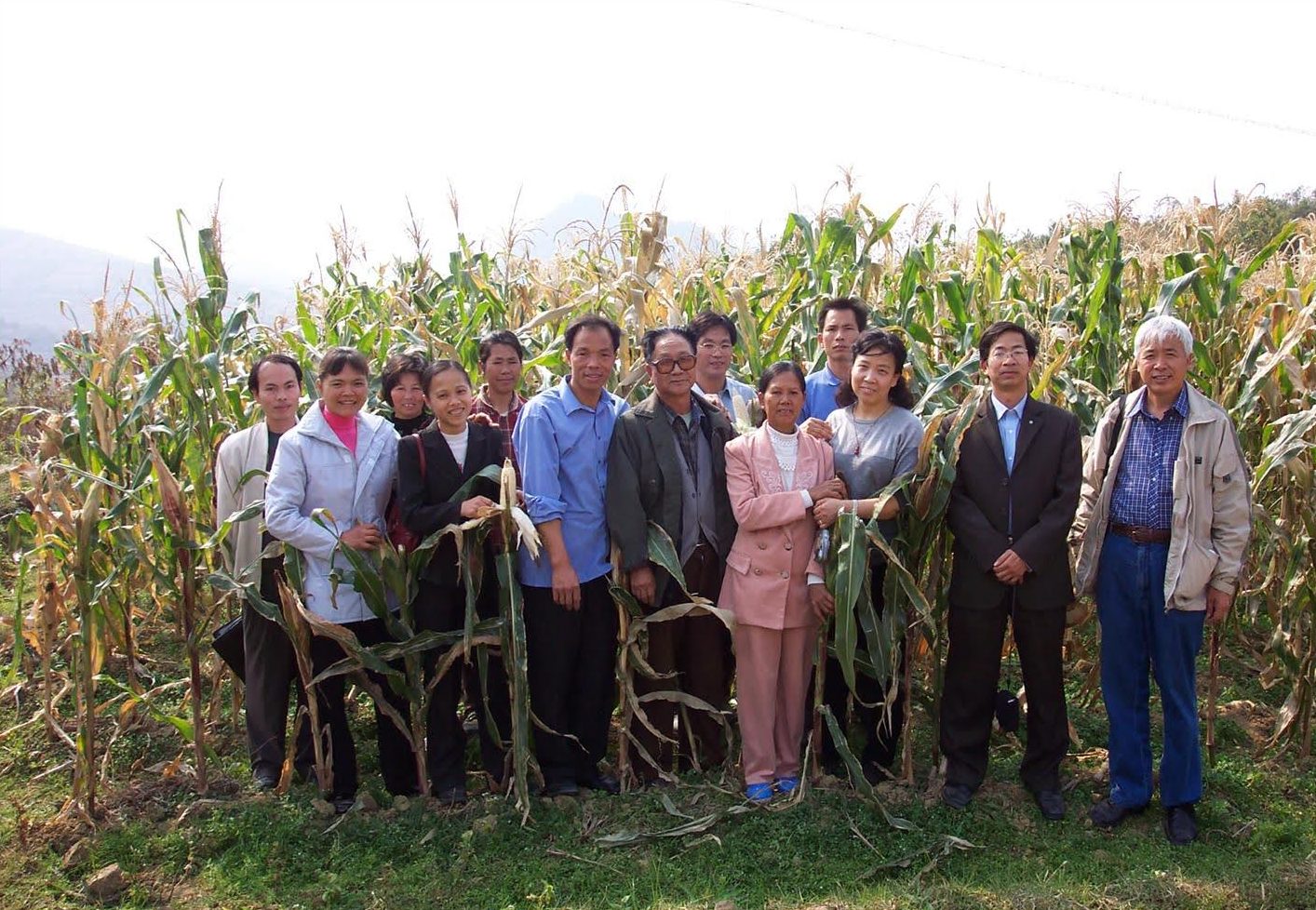
For decades, government policy has been promoting high-yield hybrid crops. There are now more commercial varieties of maize available but the number of local varieties has plummeted. An ongoing national survey of China’s crop resources found the country has over 20,000 cultivars to choose from, up from 2,400 in 1956. But 70% of landraces have been lost – down from 10,000 to 3,000. The problem with maize epitomises the general situation of China’s agrobiodiversity.
75%
of global crop diversity has been lost since the start of the last century
This issue is not limited to China. Globally, landraces have been abandoned in favour of high-yield alternatives. The FAO estimated that 75% of global crop diversity has been lost since the start of the last century.
The “Aichi Targets”, set under the UN Convention on Biological Diversity at the 2010 UN biodiversity conference held in Nagoya, Japan, proposed maintaining the genetic diversity of species, including cultivated plants and their wild relatives, by 2020. This goal has not been achieved.
High-yield crops have increased output, but the associated loss of landraces has eroded the diversity available to crop-breeders. This is set to become a major food security threat. Crop breeding is not sustainable without the diversity of its genetic resources – the farmers’ seeds.
Conserving seeds through planting
Following on from the Shanggula project, scientists, farmers and NGOs working to preserve landraces have set up community seed banks elsewhere in China. Thanks to efforts over the past two decades from NGOs, local governments and numerous individuals, there are now 40 banks spread across 14 provinces. These collect, conserve and make use of local landraces, and exchange seeds among themselves.
In 2013, based on the work of a series of participatory seed-breeding projects, scientists from public institutions such as Zhang Shihuang’s and the Center for Chinese Agricultural Policy at the Chinese Academy of Sciences worked together to establish the Farmers’ Seed Network, to support breeding, sharing and advocacy. The farmers involved have a range of motives.
Lu Ruixiang, from Chifeng, Inner Mongolia, owns a small seed company and has collected over 100 landrace varieties. She told China Dialogue that as a child her parents took her with them as they pollinated their maize crops and pulled weaker seedlings of sorghum from the ground to ensure the strength of the variety. Her mother would also tie a piece of string around larger and healthier tomatoes, as a sign they were not to be eaten, but to be kept for their seeds. Lu still saves seeds from that variety called “Apple Green”. Seeing how many people missed old flavours such as these, she saw a market opportunity.
Partnerships for Community Development (PCD) is a Hong Kong NGO that has worked in Chinese villages for two decades. In 2006, it started to promote the conservation of landraces in southwest China and has become a long-term partner of Farmers’ Seed Network. Angus Lam, chief representative of PCD’s Beijing office, told China Dialogue that older villagers have been noticing how the climate has changed. While landrace yields may be lower per square metre than commercial alternatives, they are more reliable and so an increasing number of farmers are considering using them. The Covid-19 pandemic and a drop in exports has also seen many young people return to the countryside and attempt to sell local products through online marketing.
Meanwhile, Lam stresses that the seeds have cultural worth alongside commercial and genetic value. In the indigenous communities of the southwest, seeds can be passed down through countless generations. In some villages, seeds are given as dowries or as gifts at weddings, funerals and the birth of a child. This itself is a social mechanism for keeping vital resources safe. If those seeds are lost, the associated social relationships, collective memories and cultural traditions may also die.
The system of “important agricultural heritage” provides some opportunity for better conserving local varieties. In 2014, the then Ministry of Agriculture designated the dryland stone terraces in Shexian county, Hebei province as a site of nationally important agricultural heritage. One important criterion for winning this status is richness of germplasm resources. In 2018, He Xianlin, the Shexian agricultural bureau’s senior horticulturist, started work with local farmers to gather and catalogue seeds of 170 local varieties, including millet, maize, beans, sorghum and various vegetables.

He Xianlin says in-situ conservation of seeds – keeping them in use and in the ground – is more important than simply storing them. Constant planting allows varieties to adapt to changes in the climate and remain vital. “We need landraces to be valued for in-situ conservation to happen, and in-situ conservation is essential to better protect the vitality of germplasm resources,” he told China Dialogue.
Since the 1980s, He Xianlin has worked on introducing new agricultural technologies and has a great deal of experience in crop breeding. Since 2019, he has been helping local farmers to improve local millet and bean varieties, with the aim of producing superior varieties to sell commercially.
Field genebank
An artificial ecosystem for the conservation of genes.
He Xianlin’s efforts were mentioned in a policy suggestion submitted to this year’s Two Sessions meetings by Min Qingwen, a member of the People’s Political Consultative Conference and a researcher at the Chinese Academy of Sciences’ Institute of Geographic Sciences and Natural Resources. Min, who has dedicated himself to the preservation of agricultural heritage, told China Dialogue that China currently protects germplasm mainly through public gene banks. This is important but, like He Xianlin, he says storing seeds in freezers will not help them adapt to the changing climate and environment. He thinks “important agricultural heritage sites” should be used for in-situ conservation.
In his suggetion, Min said: “Unlike ex-situ conservation, the use of agricultural heritage sites to protect germplasm resources would continue the dynamic processes of natural and human selection, increasing adaptation to environmental changes, diseases and pests. These are advantages the public gene banks, protected areas and germplasm nurseries cannot provide. The in-situ approach will also provide an extra reserve and source for gene banks.”
A new spring?
In February 2020, the State Council issued guidance on protecting germplasm, stressing their strategic importance for food security and supply of key agricultural products. It also declared these resources as essential for agricultural innovation and developing a modern seed industry – and that all seeds which should be conserved would be conserved. At the end of 2020, the Central Economic Work Conference identified “resolving seed and arable land issues” as one of eight major economic tasks to be completed in 2021. Meanwhile, descriptions of seeds as the “silicon chips” of agriculture started to appear in government and media language.
This July, the 12th meeting of the Central Comprehensively Deepening Reforms Commission passed an action plan for developing the seed industry, which says: “Seed security should be regarded as of strategic importance and linked with national security… China’s seed industry should be self-reliant and self-strengthening, with independent and controllable seed sources.”
A new spring would seem to be on the way for China’s seed industry, but Min Qingwen says this is targeted mainly at crop breeding tech and industrialisation. “We still need to take germplasm protection seriously, particularly of those traditional varieties with local characteristics. But that often gets overlooked.” Several questions stand out for him: “Do we know what germplasm exist in farms around the country? Do we know where to find them? Could they be used in crop-growing? What threats do they face? I don’t think it’s time to start talking about spring. At best, this is early spring.”
Min says germplasm resources in urgent need of protection can be divided into two categories. The first are landraces and wild relatives of crop plants which do not have much commercial value, yet are valuable for their genes. These need to be protected by the government through reserves, much like those established for endangered animals. The second are landraces that have the potential to be commercialised. These are often low-yielding but tasty and could meet niche market demands. Markets could be fostered for these, and supportive policies put in place.
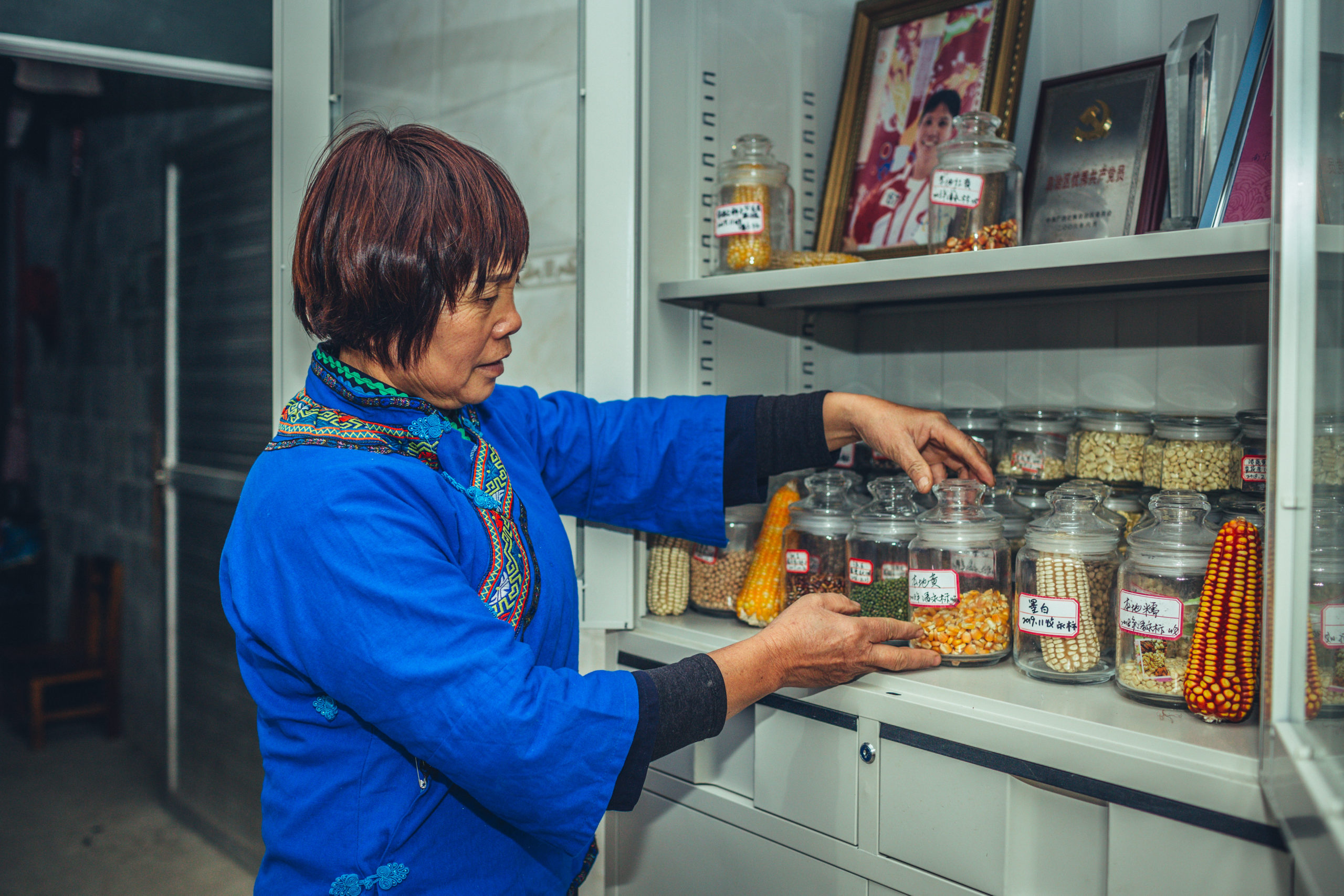
As things stand, the government is spending very little on the kind of germplasm reserves Min wants to see. The community seed bank in Shexian county gets no government funding, despite being a designated agricultural heritage site, and having been nominated as a “globally important agriculture heritage system” by the UN Food and Agriculture Organisation.
“In the past, China had limited funds and focused on protection of wild animals such as the giant panda. We need to take things step by step. But I think now we have the financial resources needed to protect traditional germplasm resources,” he said.
To others, simply letting the government and the market each do what they do best is not enough to solve the conundrum. China’s seed system is split. There are the “farmer seed systems”, where farmers protect and utilise local varieties, and there is the “formal seed system”, composed of public research institutions and seed companies. This split was noted in an impact assessment report of China’s seed policy published last year by Farmers’ Seed Network in partnership with research institutions and NGOs. According to the report, the disconnect has resulted in seeds cultivated by the formal system failing to meet the needs of farmers, while the rapid loss of local varieties has narrowed the germplasm available for formal seed breeding.
The report proposes promoting cooperation between the farmer and formal seed systems, and among the peasants, public research institutions and seed companies within them. It also proposes supporting farmers to protect and utilise germplasm through benefit-sharing mechanisms, and strengthening the complementarity between farmers’ seed systems and the public gene banks. The collaboration around Guinuo 2006 mentioned above provides a model for this kind of programme.
Benefit sharing awaits a breakthrough
When China’s seed law was revised in 2016, it did, after some controversy, protect farmers’ rights to breed, use and exchange conventional seeds. But new commercial crops must be tested to confirm their “distinctness, uniformity and stability” before they can enter the market. Most ordinary farmers don’t have the tech to do this and only seed companies can make the application.
That’s why the Guinuo 2006 partnership went far beyond developing a single new type of maize. It also helped local farmers commercialise their preferred landrace varieties, pass through the approvals process and sell the results, sharing in the profits with their partner in the project – Guangxi Academy of Agricultural Sciences. Farmers could also sell the seeds and use them for further breeding of hybrids. In contrast, the current system is different and unfair to farmers. When seed companies develop new varieties, they often use the seeds bred by generations of farmers as their raw material, then keep all the profit. Partnerships like Shanggula are an active step toward one of the three objectives of the UN Convention on Biological Diversity (CBD), namely “the fair and equitable sharing of benefits arising from the utilisation of genetic resources”.
In 2013, the Guinuo 2006 maize variety was given for free by Shanggula to the villagers of Shitoucheng in Lijiang, Yunnan province. As part of a Farmers’ Seed Network trial, a Shitoucheng farmer, Zhang Xiuyun, improved the variety, producing Xiuyun 1 and Xiuyun 2 strains adapted to the drier conditions that climate change is bringing to the surrounding Jinsha River basin. But as she is not eligible to apply for the regulatory approval to sell them, she is only able to pass the seeds around locally – they cannot be sold.
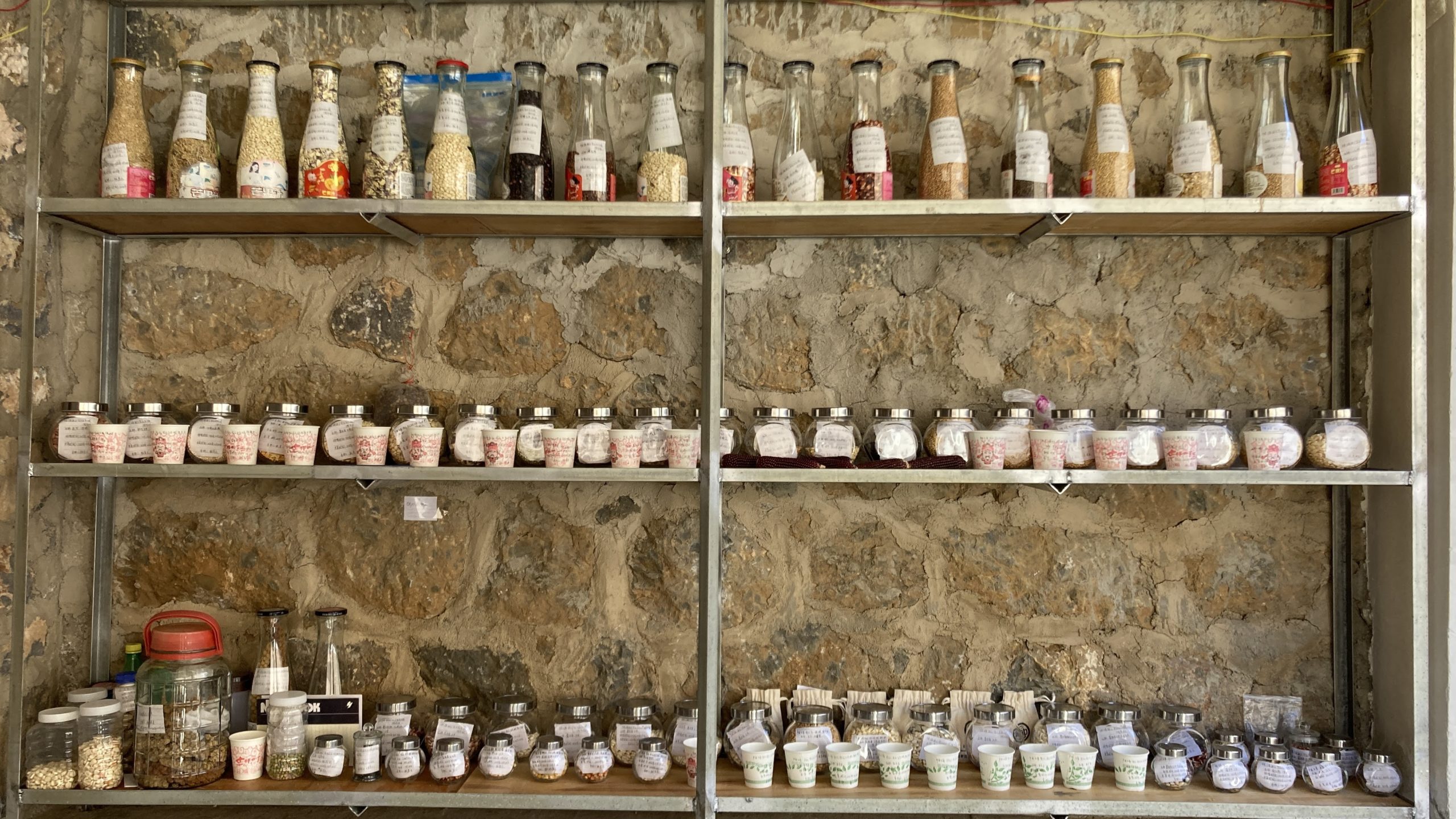
This predicament arises from the lack of an institutional framework to ensure farmers’ right to benefit sharing, as agreed under the CBD.
In 2014, as a supplementary agreement to the CBD, the Nagoya Protocol on Access and Benefit Sharing entered into force. The document requires parties to ensure that the benefits derived from the use of genetic resources and related traditional knowledge owned by indigenous peoples and local communities are shared fairly with them. Each party should also obtain prior and informed consent before accessing the genetic resources belonging to these communities.
According to the secretariat of the CBD, as of July 2020, 87 of the 126 parties to the Nagoya Protocol, including China, have put in place national access and benefit sharing measures, as well as established competent national authorities to do the work.
However, Xue Dayuan, a professor at the College of Life and Environmental Sciences at Minzu University of China, told China Dialogue that legislative work on access and benefit sharing has been lagging. There are only a few local initiatives, and no dedicated national legislation has been introduced so far. Xue, who participated in the negotiation of the Nagoya Protocol on behalf of China, calls this an “inexcusable flaw” in the implementation of the CBD, and believes it prevents China from using benefit-sharing mechanisms to better protect agricultural biodiversity.
On 11 October, the first phase of the 15th Conference of the Parties to the CBD opened in Kunming (the second phase will be held from April to May next year, also in Kunming). On 13 October, the conference passed the Kunming Declaration drafted by the host, China, which among much else promised to step up efforts to ensure the fair sharing of the benefits from genetic resources, including traditional knowledge associated with those resources. Xue Dayuan said: “This is a positive signal.”
In a separate interview, with CCTV in Kunming, he said: “The CBD has three objectives: conservation, sustainable use and fair and equitable sharing. Whether biodiversity can be better protected depends on whether the third objective can be achieved.”
